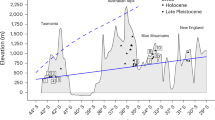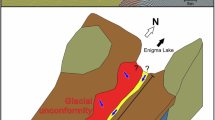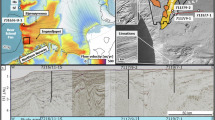Abstract
IN answer to Mr. Burchell, it is inaccurate to say that I relegated Lamplugh's “Late Glacial Boulder Clay” deposit to Late Pleistocene times, since Lamplugh nowhere described the flint-bearing deposit by those words. In his paper on the Drifts of Flamborough Head (Quart. Jour. Geol. Soc., vol. 47, pp. 384–431; 1891) he shows the deposit in question in only one of his fifteen sections, that at Danes' Dyke; he describes it as “a few feet of loamy stuff resembling a weathered Boulder Clay” and as “stony earth like weathered Boulder Clay”, and in a generalised table includes it under the heading “Late Glacial Gravels, Brickearth, and Boulder Clay”. In all other sections Lamplugh ignores this deposit; he also omits to show any soil or subsoil. I personally am convinced that if Lamplugh were with us to-day he would class Mr. Burchell's deposit under some such heading, or use the more expressive Yorkshire term, ‘muck’. In the memoir on Holderness, Clement Reid definitely classes the bed at Kelsey Hill, Burstwick, as Post-Glacial.
This is a preview of subscription content, access via your institution
Access options
Subscribe to this journal
Receive 51 print issues and online access
$199.00 per year
only $3.90 per issue
Buy this article
- Purchase on SpringerLink
- Instant access to full article PDF
Prices may be subject to local taxes which are calculated during checkout
Similar content being viewed by others
Author information
Authors and Affiliations
Rights and permissions
About this article
Cite this article
BROMEHEAD, C. Flint Implements of Upper Palæolithic Age from Yorkshire. Nature 126, 242 (1930). https://doi.org/10.1038/126242b0
Issue date:
DOI: https://doi.org/10.1038/126242b0



